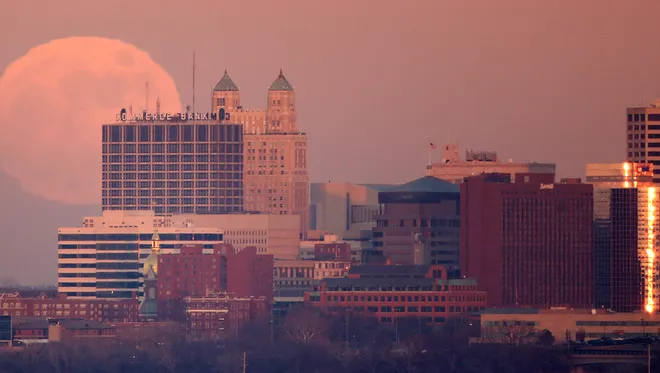Where is rent going up? New York may be obvious, but the Midwest and South are close behind
If last August’s historically high rental prices gave you sticker shock, brace yourself: Next month's prices could be even higher.
The national median rent price climbed to $2,038 in July, only $15 less than August 2022 when prices peaked at $2,053. Rents are up nearly 5% since February, when the monthly average bottomed out at $1,936.
Even though rental growth has slowed since last September − even registering negative year-over-year growth in May − the cost of renting has increased by 14% over the past two years, adding almost $250 to monthly rent bills, according to an analysis by Rent.com. Over the course of the coronavirus pandemic, rents have risen 25%, or more than $400, since 2019.
“Should rents continue to rise at the average rate since February, the national price would surpass last August’s record next month by nearly $5, setting another historical high,” says Jon Leckie of Rent.com.
Rental markets vary by state and region

While 33% of state-level rental markets saw a year-over-year decline in July, South Dakota topped the chart with a 23% year-over-year increase. The median rent in the state stood at $1,209.
Regionally, the West was the only area to register yearly declines, dipping 1% year over year. In the Northeast, the most expensive region in the nation, rents grew by 5% on a yearly basis, followed by the Midwest, where rents rose by 4%. Despite the steep increase, the Midwest remained the most affordable with a median rent of just over $1,400. The South grew moderately at just one-quarter of 1%.
Of the 10 largest yearly gainers, only New York State, which saw 13% rent growth year over year, was outside the South or Midwest. South Dakota and Mississippi led yearly increases with growth above 20%. Iowa and North Dakota saw increases above 10%, and Wisconsin, Minnesota, Arkansas, Michigan and Indiana all experienced rent growth above 8%.
Despite these increases, the rent prices among these states, excluding New York, averaged $1,266, or $772 less than the national median.
How are metro area rent prices doing?

Among the 50 most populous metropolitan areas, metros in the Midwest had the biggest share of rent gainers in July.
The Kansas City, Missouri, metro area saw the most significant yearly increase at 16%. Other Midwestern metros, including Columbus, Detroit and Minneapolis, saw increases of 5%, 4.7% and 8%, respectively. Oklahoma City, Memphis and Charlotte led yearly increases in the South.
Despite regional declines, California metros San Jose and San Diego were among the largest yearly gainers with 7% and 6% increases. However, San Francisco and Sacramento saw yearly declines of nearly 6%and 4%. Other metros in the West, including Seattle, Portland and Las Vegas, saw price drops of 10% or more year over year.
The biggest rent declines were in the South as prices in New Orleans and Austin, Texas, fell by more than 12% year over year.
Metro areas that experienced the greatest increase in rent prices year over year.
- Kansas City, Missouri (+16%)
- Oklahoma City, Oklahoma (+9%)
- Memphis, TN-MS-AR (+8%)
- Minneapolis-St. Paul-Bloomington, MN-WI (+8%)
- Providence-Warwick, RI-MA (+8%)
- San Jose-Sunnyvale-Santa Clara, CA (+7%)
- San Diego-Chula Vista-Carlsbad, CA (+6.%)
- Detroit-Warren-Dearborn, MI (+5%)
- Columbus, OH (+5%)
- Charlotte-Concord-Gastonia, NC-SC (+4%)
Swapna Venugopal Ramaswamy is a housing and economy correspondent for USA TODAY. You can follow her on Twitter @SwapnaVenugopal and sign up for our Daily Money newsletter here.
Disclaimer: The copyright of this article belongs to the original author. Reposting this article is solely for the purpose of information dissemination and does not constitute any investment advice. If there is any infringement, please contact us immediately. We will make corrections or deletions as necessary. Thank you.







